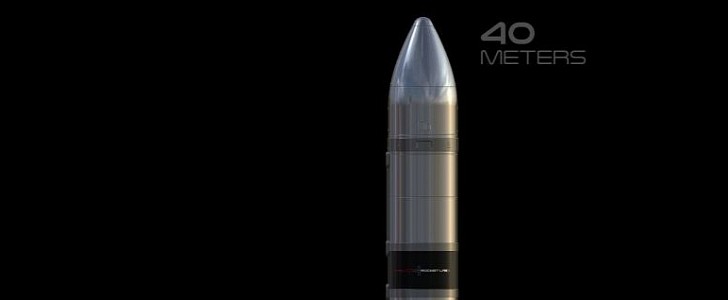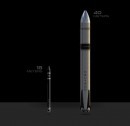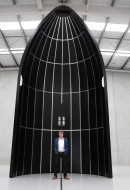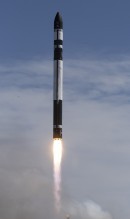Space is open for business, Rocket Lab CEO Peter Beck said a few years back, when the California-based company launched the Electron booster. Since then, it has been used mostly to put satellites into orbit but Rocket Lab is now ready to send people into space.
Available at the bottom page is the latest announcement from Rocket Lab. It’s twice as entertaining and fun as a movie trailer and several times more awesome because it’s not fiction. Focusing on the company’s dependability when it comes to committing to a project, it shows CEO Peter Beck talk about previous accomplishments and then eating the proverbial hat (but literally so) before announcing Neutron.
Rocket Lab has been around since 2002 and, as of 2018, when the first Electron booster was launched, it’s been putting dozens of satellites into orbit. Electron specializes in small payloads and, while the company never mentioned plans for a bigger rocket, it feels like the right step in the right direction. This is where Neutron comes in: a two-stage vehicle with a reusable first stage that will land on a platform in the ocean, guaranteeing high launch cadence and minimized launch costs.
Neutron will be 40 meters (131 feet) long and will have a payload fairing with a 4.5-meter (14.7-foot) diameter. The cargo will be loaded into the fairing, and the payload will depend on the destination: lift capacity for low Earth orbit is 8,000 kg (17,636 pounds), for the Moon 2,000 kg (4,400 pounds) and 1,500 kg (3,300 pounds) for Mars. More importantly, “Neutron will also be capable of International Space Station (ISS) resupply and human spaceflight missions,” the company says.
Given ongoing efforts by SpaceX with Falcon 9, which has nearly three times the payload capacity, it would be easy to compare the two companies and suggest they’re direct competitors. And that Rocket Lab is already losing for choosing to build smaller. Beck is quick to shut this thought process before it even forms.
“Efficiently building the mega constellations of the future requires launching multiple satellites in batches to different orbital planes,” Beck says. “It’s a requirement that all too often sees large launch vehicles fly with payloads well below their full lift capacity, which is an incredibly expensive and inefficient way to build out a satellite constellation. Neutron’s 8-ton lift capacity will make it ideally sized to deploy satellites in batches to specific orbital planes, creating a more targeted and streamlined approach to building out mega constellations.”
Neutron will be online in 2024 and will launch from NASA’s Wallops Flight Facility in Virginia.
Rocket Lab has been around since 2002 and, as of 2018, when the first Electron booster was launched, it’s been putting dozens of satellites into orbit. Electron specializes in small payloads and, while the company never mentioned plans for a bigger rocket, it feels like the right step in the right direction. This is where Neutron comes in: a two-stage vehicle with a reusable first stage that will land on a platform in the ocean, guaranteeing high launch cadence and minimized launch costs.
Neutron will be 40 meters (131 feet) long and will have a payload fairing with a 4.5-meter (14.7-foot) diameter. The cargo will be loaded into the fairing, and the payload will depend on the destination: lift capacity for low Earth orbit is 8,000 kg (17,636 pounds), for the Moon 2,000 kg (4,400 pounds) and 1,500 kg (3,300 pounds) for Mars. More importantly, “Neutron will also be capable of International Space Station (ISS) resupply and human spaceflight missions,” the company says.
Given ongoing efforts by SpaceX with Falcon 9, which has nearly three times the payload capacity, it would be easy to compare the two companies and suggest they’re direct competitors. And that Rocket Lab is already losing for choosing to build smaller. Beck is quick to shut this thought process before it even forms.
“Efficiently building the mega constellations of the future requires launching multiple satellites in batches to different orbital planes,” Beck says. “It’s a requirement that all too often sees large launch vehicles fly with payloads well below their full lift capacity, which is an incredibly expensive and inefficient way to build out a satellite constellation. Neutron’s 8-ton lift capacity will make it ideally sized to deploy satellites in batches to specific orbital planes, creating a more targeted and streamlined approach to building out mega constellations.”
Neutron will be online in 2024 and will launch from NASA’s Wallops Flight Facility in Virginia.









